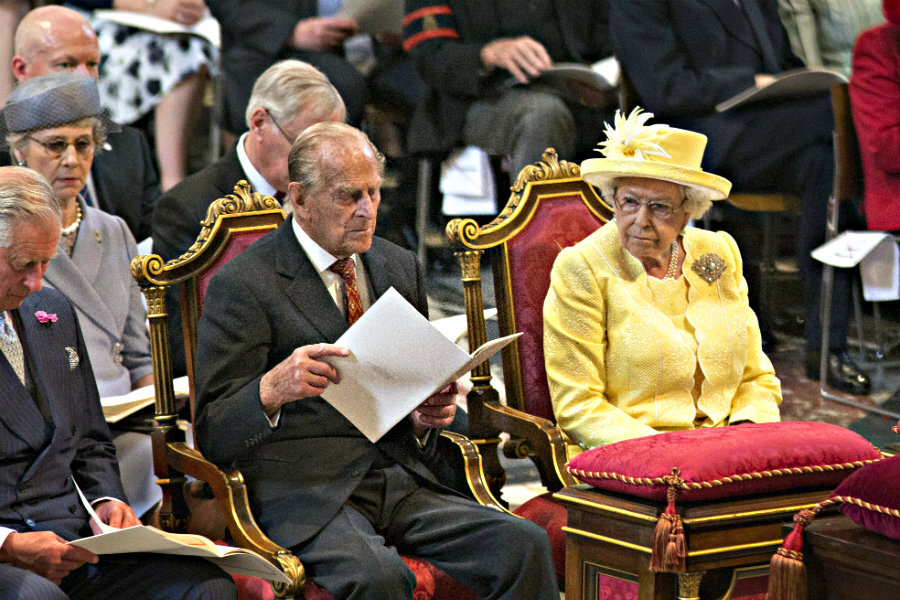Why does Queen Elizabeth II have two birthdays a year?
Loading...
Today marks the beginning of a weekend of festivities throughout Britain, as Queen Elizabeth II's subjects come together to celebrate her official 90th birthday with a countrywide celebration.
But wait – haven't we already celebrated the queen's 90th birthday this year?
As it happens, Queen Elizabeth celebrates two birthdays each year, a royal tradition that began in the 18th century and has carried on to this day. Her real birthday is April 21.
Since 1748, during the reign of King George II, English sovereigns have celebrated a private birthday and an official birthday. In order to ensure the best of Britain's notorious weather so that outdoors celebrations don't get rained out, the official celebration is held each year in early June.
This year, the queen's official birthday coincides with her husband's real birthday. Prince Philip, the Duke of Edinburgh, turns 95 today.
Dignitaries kicked off the weekend with a service in the queen's name at St. Paul's cathedral on Friday, thanking her for 64 years of steadfast leadership.
"We look back on Your Majesty's 90 years in the life of our nation with deep wonder and profound gratitude," the Archbishop of Canterbury, Justin Welby, said to hundreds of attendees, including 50 members of the extended royal family. "Through war and hardship, through turmoil and change, we have been fearfully and wonderfully sustained."
The Archbishop of Canterbury was not the only one to praise the queen, whose six decades of leadership have seen the first moon landings, Britain's first female Prime Minister, and the advent of the internet.
Through it all, said the Very Reverent David Ison, the queen has ruled her people with, "faithful devotion, dutiful commitment, loving leadership, gentle constancy, royal dignity and kindly humanity."
Friday's service at St. Paul's will be followed by events throughout the weekend, including a 10,000 person picnic lunch on Sunday, thousands of smaller events throughout the British Isles, and most magnificently, the famous Trooping of the Color ceremony, scheduled for tomorrow.
Just like the changing of the guard, and the celebration of monarchs' birthdays when the weather is fine, the Trooping of the Color ceremony is an old British tradition.
On Saturday, the queen will proceed down the Mall from Buckingham Palace towards the Horse Guards Parade grounds near St. James' Court, escorted by the Household Cavalry.
When she reaches the grounds, she will review the troops, which include the Household Division and the King's Royal Troop, Royal Horse Artillary. Four hundred musicians will also present a musical program that includes England's national anthem and various marches.
The ceremony's name, Trooping the Color, comes from a portion of the ceremony, during which a featured regiment troops (or marches) its regimental flag (or 'color') through the assembled troops.
All together, 1,400 soldiers, 200 horses, and 400 musicians take part in the Trooping of the Color, forming an impressive display that has occurred on the sovereign's official birthday since 1748.
Although Queen Elizabeth has conducted this ceremony from the comfort of a carriage since 1987, she used to review the troops by horseback, undeterred by a shooting scare in 1981.
The display concludes with the queen's march back to Buckingham Palace, where she will watch a decidedly modern tradition, a Royal Air Force flypast, from the balcony.
On Sunday, organizers expect to see 10 million people across the country celebrate Queen Elizabeth's birthday at local street parties. On London’s Mall alone, a 10,000 person Patron's Lunch is scheduled to take place.








